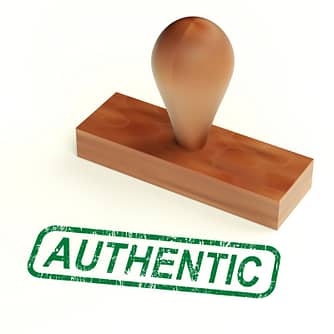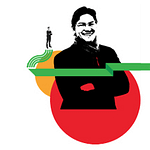This content is part of the Vision for the Public Sector Zone -- Explore the Zone
Many people, when they think about Employee Engagement, would wholeheartedly agree that authenticity is an important component, but whether they have fully considered how organisations, as well as individuals, can benefit from authenticity in the workplace is a different matter. We do not usually think of it as a source of innovation, or productivity, or even anadaptive mechanism. In fact, we may not think of authenticity in an organisational sense at all. But I’d like to suggest that over the coming years it will be understood as a major variable that separates successful from failing enterprises, happy from disengaged workforces, and adaptive from inflexible organisations.

To understand how authenticity has been left behind in the workplace, we need to look at the evolution of work. Our industrialised past has created what might be thought of as a ‘schism’ between our private selves and our work identities. In the pursuit of greater productivity and efficiency, years of industrialisation have seen a movement towards standardisation in the workplace. Efforts have been made to minimise variations in processes, and behaviour, and individuality has not been a part of this revolution. This is the workplace culture within which we operate today.
This schism creates tensions that can impact upon our wellbeing and more serious anxieties can occur when our deeply held values are in conflict with those of our workplace. Added to this, our hyper-connected lives see more frequent incursions made by work into our private domains and we find ourselves switching rapidly between our work and private personas in order to accommodate the culture clash.At an organisational level we see the system really start to creak as our industrial norms meet a new world characterised by rapid change and complexity. Put simply, we have the wrong tools for the job.
So, where does authenticity come in? Well, authentic organisations tend to act in accordance with their values building high trust environments. Employees are able to approach their work in ways that express their individuality and feel more personally invested and accountable. They experiment to see what works best, building flexible and innovative organisations. And they examine why they do what they do and challenge assumptions. This allows people to really get behind the boundaries that are reasonable and necessary, and creatively challenge those that have been formed by habit or tradition.
Authenticity is not something that can be given, it is a dynamic process of becoming and so freedoms need to be created in order for the individual to actively claim it. These Freedoms are the three drivers of authenticity, and what we might think of as being the engine beneath authenticity.
- The Freedom to Operate is the extent to which an individual can organise their work in the way that best suits them. But more than this, even when it comes to alternative conceptualisations about what the task itself should entail, this too should be in the domain of control of the individual
- The Freedom to Speak is the extent to which individuals are engaged in dialogue that is diverse, open, and meaningful and in a manner of their choosing. But more than this, the Freedom to Speak is a strong encouragement for workers to talk more often, more openly and more deeply about the issues they and the organisation faces.
- The Freedom to Actualize refers to the scope for individuals to discover, learn and evolve their personalities within the workplace. This needs to be understood as a deep and dynamic process of awareness, development and change at the heart of individuals (think Maslow’s Self Actualization concept Plus)
Leaders and managers, acting as Freedom Fighters, are key to building the capabilities of both individuals and the organisation so that employees can claim their authenticity. Here are some ideas about where they can make a start.
- Role model authenticity by claiming your own freedoms. As managers exhibit greater authenticity this acts as an open invitation for others to do the same.
- Adopt a ‘Min Spec’ (Minimum Specification) approach to communicating tasks and outcomes and creating greater Freedom to Operate for employees to design their own approaches to their work.
- Constantly interpret and share the values, culture, and strategic intent of the organisation in ways that are meaningful to individual workers to allow them to operate freely and authentically, but in line with the strategy.
- Protect the space for people to conduct small experiments with their work and be clear that failure is an important and valued part of the process of learning.
And here are some organisational strategies to help create authentic workplaces.
- Values eat skills for breakfast – when it comes to recruitment, nowhere near enough attention is given to the fit between personal and organisational values. To be authentic, and for employees to truly get behind the organisation, this fit has to be established from the very beginning. When it comes to raising levels of employee engagement, or even expensive dismissal processes, you might find yourself paying for this oversight later.
- Help managers to unlearn the old management models – We are familiar with the old adage that it’s hard to teach an old dog new tricks, but the truth is it’s harder still to get them to unlearn the old tricks. We need managers to rethink their contribution to the workplace and reappraise thevalue of the command, coordinate and control mantra that they’ve most likely been brought up on
- Put away the cookie cutter – resist the temptation to standardise behaviours, to restrict the freedoms of employees and to create workforce duplicates. Individuality and diversity is utterly essential for individual and workplace success and our processes e.g. recruitment, performance appraisal etc. should reflect this
- Don’t promote game players – Every time an inauthentic, ‘game-playing’, employee is promoted, a little bit of every else dies inside. Don’t undo the good work of making the organisation authentic, real and genuine by rewarding people that embody the opposite.
- If you build it they will come – Offer diverse workspaces that can cater for introverts, extraverts, groups and those who need quiet time, and allow people to choose what works best for them. And create a multiplicity of forums, informal and formal, for different kinds of dialogue and signal that even the difficult issues will be heard.
- Authenticity is an anagram of employee engagement – it’s not really, but if you want to know what really gets people to lean in, buy in, and get involved, it’s the opportunity to do their work in their own way, to learn and grow within an organisation they believe in.
A final thought, we spend up to 70% of our waking time engaged in activity related to paid work, year after year. If this work is not allowing us to learn and grow and fulfill our potential, and if it isn’t meaningful to us, then something needs to change. And if we can make our workplaces fun, adaptable and more resilient then what is stopping us?
Author: Lisa Sofianos – For a limited time I am making the Authenticity Diagnostic that features in my book Creating Authentic Organizations; Bringing Meaning and Engagement Back to Work available to Engage for Success. If you would like to know your scope for claiming your authenticity in your current work situation then you can download it here.
Image courtesy of Stuart Miles/ FreeDigitalPhotos.net




